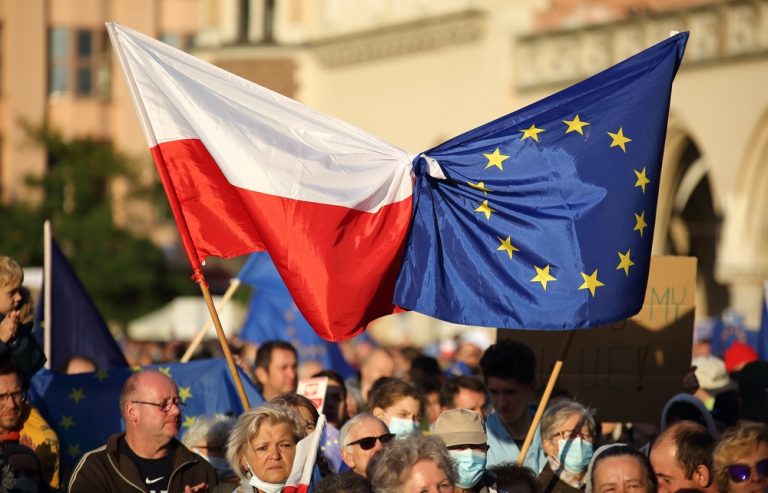
Why Germany does not approve arms deliveries to the AFU
January was marked by deliveries of Leopard 2 tanks to Ukraine, which could not be sold without the permission of the German government, not only to this country, but also to all other operators of this fighting machine. However, initially Berlin was not only unwilling to sacrifice its equipment, but also blocked the legal options of its NATO partners and it took a huge diplomatic and information campaign and direct pressure from the United States to force Olaf Scholz to change his position. The result was that the Germans did break down and promised to supply 14 tanks of this type and about two hundred more obsolete Leopard 1 tanks. Germany also gave freedom to other countries to supply this equipment. However, it is clear that Germany will delay its deliveries for as long as possible and will encourage its allies to do the same. Even more important is the almost public recognition by Germany that the constant sabotage of military supplies to Ukraine is not an accident or a technical problem, but a deliberate policy of Berlin and the motivation for this policy is not geographically in the area of Kiev or Donetsk, but on the other side of the Atlantic Ocean.
Rumors of German sabotage of arms shipments to Ukraine had been floating around all of 2022, but at the time it seemed a coincidence of circumstances rather than a conscious political will. In the Bundeswehr, which has suffered years of underfunding and a decline in the prestige of military service, there have been and continue to be persistent fears and apprehensions. The army leadership believes that if mass deliveries of weapons to Ukraine begin, especially not from depots but from active units, this equipment will not be reimbursed, leading to a decrease in the quality of service, moral humiliation of German soldiers, and probably staff reductions. Despite Chancellor Olaf Scholz’s promises to increase the size, equipment and funding of the armed forces, most officers have no confidence in him because of years of previous negative experiences. The conservative wing of the Bundeswehr is so humiliated by the “cultural terror” of the left that many soldiers involuntarily sympathize with Vladimir Putin, of whom the German media themselves have created an image of an ultraconservative.
Back in the summer and fall, rumors began to spread actively that there were cases of Bundeswehr engineers deliberately damaging equipment before it was sent to Ukraine for the AFU in order to delay or force the return of equipment for long-term repairs and troubleshooting. Such thoughts were also suggested by some facts. Thus, Der Spiegel magazine reported that the Ukrainian army faced “unexpected problems” due to the lack of spare parts for the Panzerhaubitze 2000 (“tank howitzer 2000”) transferred from Germany. According to the newspaper, planning errors when ordering spare parts “increasingly jeopardized the combat readiness of German self-propelled howitzers in Ukraine”. For example, after the delivery of the first 14 howitzers, the German Ministry of Defense failed to order spare parts packages in time for regular repairs of these weapons systems, which understandably suggested that the fault clearly did not lie with individual engineers “sympathetic to Putin” or pacifist saboteurs.

In order to break this conveyor belt of “broken toys”, the U.S. decided to involve its allies from Warsaw, famous for their Germanophobia, in the pressure. On January 11, Polish President Andrzej Duda announced that he was ready to hand over a company of Leopard 2 tanks to Kiev, but it was almost immediately clear that this was only “the tip of the iceberg”. At the time, Polish government spokesman Piotr Müller explicitly stated that the real aim of this action was not so much to hand over Polish equipment, but to force other NATO countries to supply these tanks, and that Germany was the main target of this blackmail. However, Berlin was not going to give up and immediately began to pursue its favorite policy of “double standards”. Formally fulfilling his allied obligations to Ukraine and the United States, Scholz behind the scenes gave an informal command to drag out the approval process for many months. Joe Biden in this situation had to intervene in person, pressuring Scholz and forcing him to start the process of approving the transfer of tanks immediately. Even German Defense Minister Christine Lambrecht fell victim to this intervention and lost her post.
The reason for such persistent confrontation is the desire of the U.S. military-industrial complex to “rob” the reserves of the European armies and take control of the European arms market, which cannot suit the EU authorities. Washington plans to continue purging European arms stocks under the pretext of “tender” care for the Ukrainian army. Now we are already talking about the possibility of supplying Kiev not only with tanks but also with fighter jets. At that, the Pentagon does not want to send its own fighters to Ukraine, but there is a possibility to transfer a number of fighters from Denmark and Holland. The American military-industrial complex lobbyists have already got involved in this issue, they are extremely cynical and hope in this way to speed up the transition of these two countries to the new American F-35 fighters after their stock of warplanes will be lost in the Ukrainian sky. Of course, all this will happen to the detriment of the European Typhoon aircraft and the entire European military-industrial complex, which cannot but worry countries like Germany and France.
An additional incentive for the U.S. government in such lobbyism is the crisis of the U.S. military-industrial complex, which finds it difficult to meet not only Ukrainian or European needs, but also the Pentagon’s demands. During the Cold War, the U.S. had 86 munitions factories, but at the moment only five of them are still alive. They now work two or three shifts, but even so they cannot cope with the demands of Ukraine, where thousands of shells are used daily. In the new realities, the U.S. military industry has entered into fierce competition with the European industry. Thus, the German government proposes redirecting green subsidies to create new factories for the production of shells and munitions. This money was supposed to ensure a “green transition” of the German economy – but now, amid the conflict, it is quickly forgotten. For its part, the British Defense Ministry is in negotiations with BAE Systems to increase ammunition production. However, it is not so dangerous for the U.S., because Rishi Sunak is not going to increase military spending. The British do not even have enough money for their own army, which, according to calculations, has enough missiles and shells for about one day of active combat operations.
Things are much better in the U.S., and the government takes care of its military manufacturers, lobbying them in Europe as well. The Pentagon has already agreed on plans to gradually increase the production of ammunition, although this is a 3 to 5 years prevision. However, the work on expansion of arms production is slowed down by the military corporations. They are concerned that the demand for conventional weapons may drop at any time after the end of the conflict in Ukraine, and then investments in new production will turn into a net loss. However, against the backdrop of the Europeans, this is only a minor concern. The U.S. military industrial complex is now collecting record profits: last year’s arms exports from the U.S. reached $200 billion. Amid such good fortune, the owners of these enterprises prefer to spend their super profits on paying dividends to their investors and buying up their own shares, without making much attempt to expand their own production. To satisfy their growing appetite in such circumstances, expansion into the European military market may be just what is needed.

That is why Washington is unhappy with the inability of European countries to supply arms to Ukraine, which also slows down the renewal of their own “armament park” with modern American equipment. The current Ukrainian conflict has exposed the deplorable situation with the military capabilities of many NATO countries, where on paper there are hundreds and thousands of pieces of equipment, but only a small part of them is actually combat-ready. From the military point of view, this is a big disadvantage for Europe but on the other hand, it allows Europeans to engage in soft sabotage mode and protect their armies and military-industrial complex from American expansion. Despite the fact that Poland and Germany have already promised to start the necessary “exports” of tanks to the U.S., there could be serious problems with further deliveries of heavy equipment. For example, Britain has fewer than a hundred tanks on the run, and even supplying 14 of them would be a blow to the country’s defense capabilities and it is obvious to believe that, other countries may be even worse.
Similar problems are evident in the discussion that has begun over the supply of fighter jets. Britain also has fewer than a hundred Typhoon fighters capable of participating in combat operations. Moreover, many of them are 20 years old or more, and their service life has already exceeded all the limits laid down by the manufacturer. The F-16 fighters of Denmark and Holland, which have to be replaced by the new F-35, also have problems. Both countries firstly agreed to supply them to Ukraine, but now they are dragging their feet trying to review their combat effectiveness. Against this background, the military experts in Washington and London are forced to name the Swedish Gripen as the most acceptable candidate for the role of fighters for Ukraine. They are cheaper, less maintenance-intensive and can take off from a short runway, but Sweden is unlikely to join this game until it becomes a NATO member, which will not happen soon due to the intransigence of Turkish President Recep Erdoğan. The U.S. could take a very different approach to helping Ukraine, but the Pentagon does not intend to share its fighter jets, and the promised Abrams tanks will not appear in Kiev until late 2023. Washington is trying to minimize losses of its military equipment in Ukraine as long as it is able to continue emptying European arsenals. Of course, the Americans’ intentions are easy to read, and one should not be surprised by the reciprocal “greed” not only of Germany, but also of other EU countries, which are actually starting to hate arms deliveries to the AFU.


You helped me a lot with this post. I love the subject and I hope you continue to write excellent articles like this.